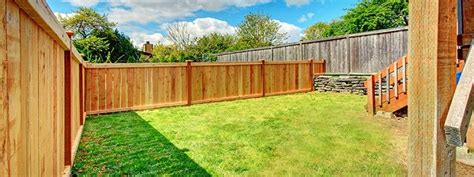Building a Fence Without Legal Hassles: A Comprehensive Guide
Building a fence can significantly enhance your property's privacy, security, and curb appeal. However, before you grab your tools, it's crucial to understand the legal aspects to avoid costly mistakes and potential conflicts with your neighbors or local authorities. This comprehensive guide will walk you through the process of building a fence legally and smoothly.
Understanding Property Lines: The Foundation of Legal Fencing
Before you even think about post holes, you must know your property lines precisely. This is the single most important step to avoid legal disputes. A survey is the best way to determine your exact boundaries. While potentially expensive upfront, it’s a small price to pay compared to the cost and stress of a neighborly feud or legal battle. Improperly placed fences can lead to boundary disputes that are difficult and costly to resolve.
How do I find my property line?
You can usually obtain a copy of your property survey from your local county recorder's office. Alternatively, a licensed surveyor can conduct a new survey for you, providing accurate markers of your property boundaries. This is particularly important if your property line isn't clearly marked or if you're unsure of its location.
Zoning Regulations and Building Codes: Navigating Local Laws
Local municipalities have zoning regulations and building codes that govern fence construction. These regulations often specify:
- Fence height: Maximum allowable height varies considerably.
- Fence materials: Some areas restrict the types of materials you can use (e.g., no barbed wire in residential zones).
- Setbacks: The minimum distance a fence must be from your property line. This often varies depending on the type of fence and your zoning.
- Permits: Whether or not you need a permit before starting construction. This is usually a requirement for fences exceeding a certain height or length.
It's essential to check with your local building department or city hall to determine the specific regulations in your area before you begin construction. Failure to obtain necessary permits or adhere to local regulations can result in fines, stop-work orders, and even the requirement to demolish your fence.
Neighborly Relations: Communication is Key
Even if your fence is entirely on your property and complies with all local regulations, good communication with your neighbors can prevent misunderstandings and disputes. Consider:
- Talking to your neighbors before starting construction: Discuss your plans, the fence's location, and any potential concerns they might have. Early communication can often resolve issues before they escalate.
- Sharing survey information: Showing your neighbors the survey to confirm the fence's placement on your property can foster trust and prevent future disagreements.
- Maintaining a positive relationship: A friendly and collaborative approach can make the entire process much smoother.
Choosing the Right Fence: Materials and Design Considerations
Once you've navigated the legal hurdles, you can focus on the aesthetics and practical aspects of your fence. Consider:
- Material: Wood, vinyl, chain link, and metal are common choices, each with its own pros and cons in terms of cost, maintenance, and durability.
- Height and style: Select a height and style that complements your home and meets your needs for privacy and security.
- Gate placement and style: Ensure compliance with local regulations regarding gate placement and design.
Getting the Necessary Permits (if required): A Step-by-Step Guide
If your local regulations require a permit, the process typically involves:
- Submitting an application: Complete the necessary application forms and provide relevant documentation, such as your property survey.
- Paying fees: Expect to pay fees for the permit application and any inspections.
- Inspections: Your local building department may schedule inspections at various stages of construction to ensure compliance with regulations.
What happens if my neighbor disputes my fence?
If a neighbor disputes the location or legality of your fence, attempt to resolve the issue amicably through conversation and potentially mediation. If this fails, you may need to involve a lawyer and potentially go to court to settle the matter. This is why proper planning and adherence to regulations are crucial from the start.
By meticulously following these steps and prioritizing communication, you can build a fence that enhances your property while staying on the right side of the law. Remember, proactive planning and adherence to regulations can save you considerable time, money, and stress in the long run.

